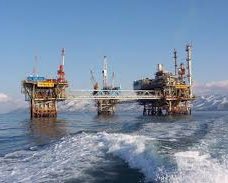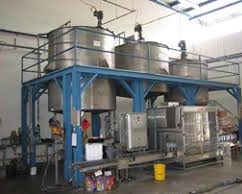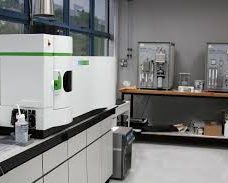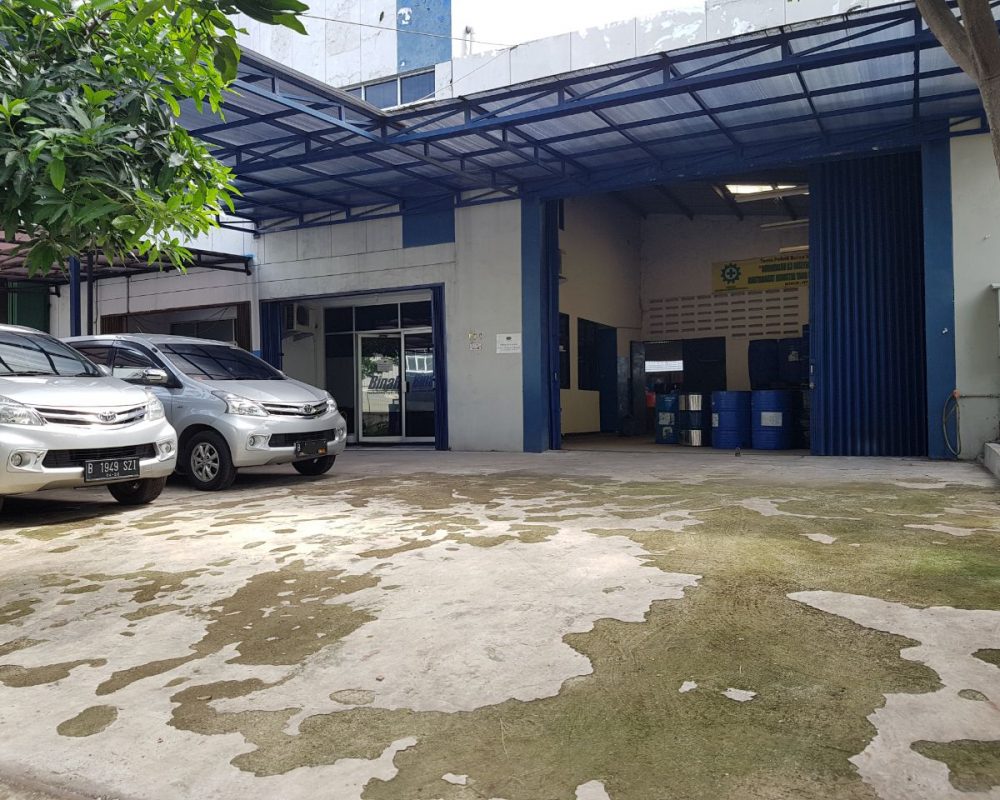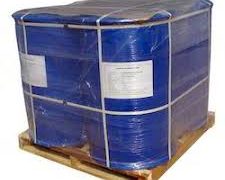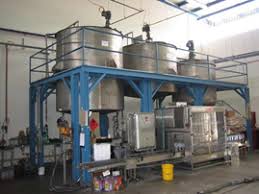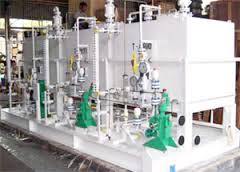BINAR –8025
BINAR –8025 H2S scavenger is an Triazine base sulfide scavenger. The well fluid coming to GGS facilities many times contains substantial amount of CO2, H2S and chlorides of Na, Ca, and Mg. It is desirable to minimize the amount of H2S by injecting sulfide-scavenging chemical into the system. BINAR-8001 inhibits H2S in the pipeline carrying the water having H2S. Free H2S causes severe corrosion resulting into choking of the pipeline and also creates bacterial problems.
GENERAL CHARACERISTICS
| Form | Clear Liquid |
| Colour | Colorless to pale yellow |
| Solubility | Soluble in water |
| pH | 9.0 – 11.0 |
| Specific Gravity | 1.10 – 1.13 |
| Odor | Product specific |
| Viscosity | Less than 20 cSt |
HANDLING & SAFETY
Avoid contact with eyes, cut skin and clothing. In case of contact with eyes, immediately flush with water for 15 minutes and seek medical aid. Wash skin immediately if there is any contact and remove contaminated clothing. Store in cool and closed condition. Proper care to be taken as that for volitile amines.
DOSAGE
BINAR-8001 has a very low viscosity and can be used as delivered if desired can be diluted with water or methanol. The exact dosage recommendation depends upon the type of system and more specifically upon the H2S content in water. Indicative dosage could be 1-20 ppm of BINAR-8025 per ppm of H2S.
PACKING
200 Kg in HDPE drums.
SHELF LIFE
BINAR-8025 has a storage life of 12 month if stored in the closed containers.
===========================================================
INFORMATION
 Hydrogen sulfide (H2S) is a very toxic and pungent gas that causes problems in both the upstream and downstream oil and gas industry. The process of removing H2S is known as gas sweetening, by either iron sponge H2S scrubbers (forming iron sulfide) or chemical scavengers. Typical H2S scavengers used in the oilfield are amine based chemicals[. They can be roughly categorized into regenerative and non-regenerative H2S scavengers.
Hydrogen sulfide (H2S) is a very toxic and pungent gas that causes problems in both the upstream and downstream oil and gas industry. The process of removing H2S is known as gas sweetening, by either iron sponge H2S scrubbers (forming iron sulfide) or chemical scavengers. Typical H2S scavengers used in the oilfield are amine based chemicals[. They can be roughly categorized into regenerative and non-regenerative H2S scavengers.
Regenerative H2S scavengers
In large production facilities, the most economic solution to remove H2S in the gas process stream is to install a regenerative system for treating the sour gas. After absorbing the H2S, the chemical is then regenerated, usually by heating and reused in the system. The separated H2S is treated by a modified claus process to form elemental sulfur.
Several types of amine solutions can be used as the absorbent depending on the sour gas specifications. Typical amines are:
- Monoethanolamine (MEA)
- Diethanolamine (MEA)
- N-methildiethanolamine (MDEA)
- Diisopropylamine
- Diglycolamine (DGA),also known as 2-(2-aminoethoxy)ethanolamine
Most modern amine gas sweetening processes are MDEA-based, which typically only absorbs H2S. MEA, DEA and DGA typically absorb other acid gases as well (i.e. CO2) besides H2S.
Non-regenerative H2S scavengers
Chemicals
Triazine chemistries
This type of scavenger can be divided into the following categories. Triazine scavengers are the most commonly used.
- Triazine-alkaline and can cause carbonate scaling
- Solid scavengers (generally zinc or iron based materials)
- Oxidizing chemicals (e.g. NaClO2, NaBrO3, NaNO2, etc.)
- Aldehydes
- Glyoxal-can be applied in neutral, acidic, and alkaline conditions. Glyoxal does not increase scaling risk, but its reaction time is much slower than triazine.
- Metal carboxylates and chelates
- Both water and oil soluble high valence metal chelates have been used as H2S scavengers for treating drilling fluids and contaminated water and oil streams.
Application processes
Non-generative H2S scavengers are typically applied via a in-line injection quail to finely disperse the liquid chemical into the gas stream to maximize reaction.
A contact tower can be used to improve efficiency if weight/space is not a constraint.
Binar chemical Benefits
- Improved safety due to reduced hydrogen sulfide content;
- Meet contract sales limit for H2S content;
- Removal of H2S gas from process systems, thereby reducing corrosion;
- Easy removal of reaction products from process systems; and
- Maintain asset integrity and reduce the need for replacement equipment

